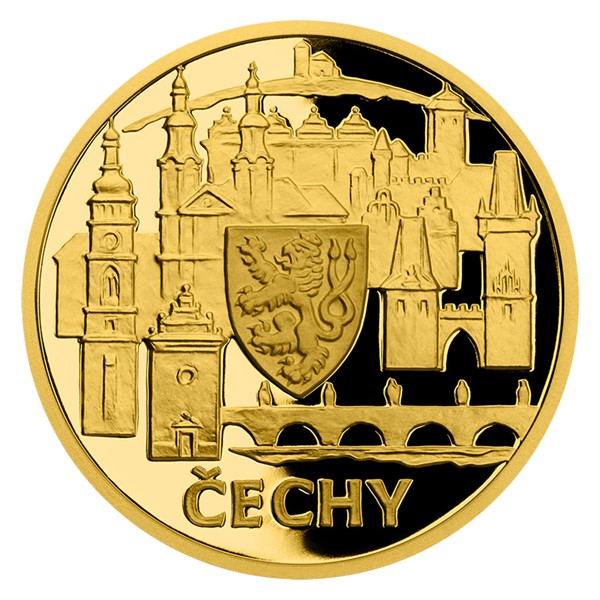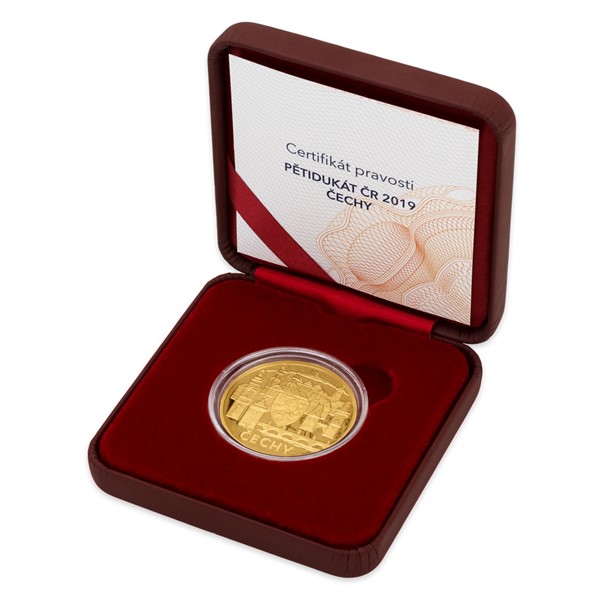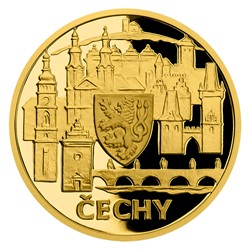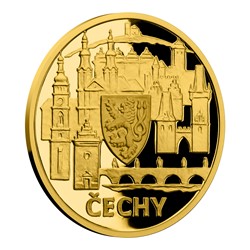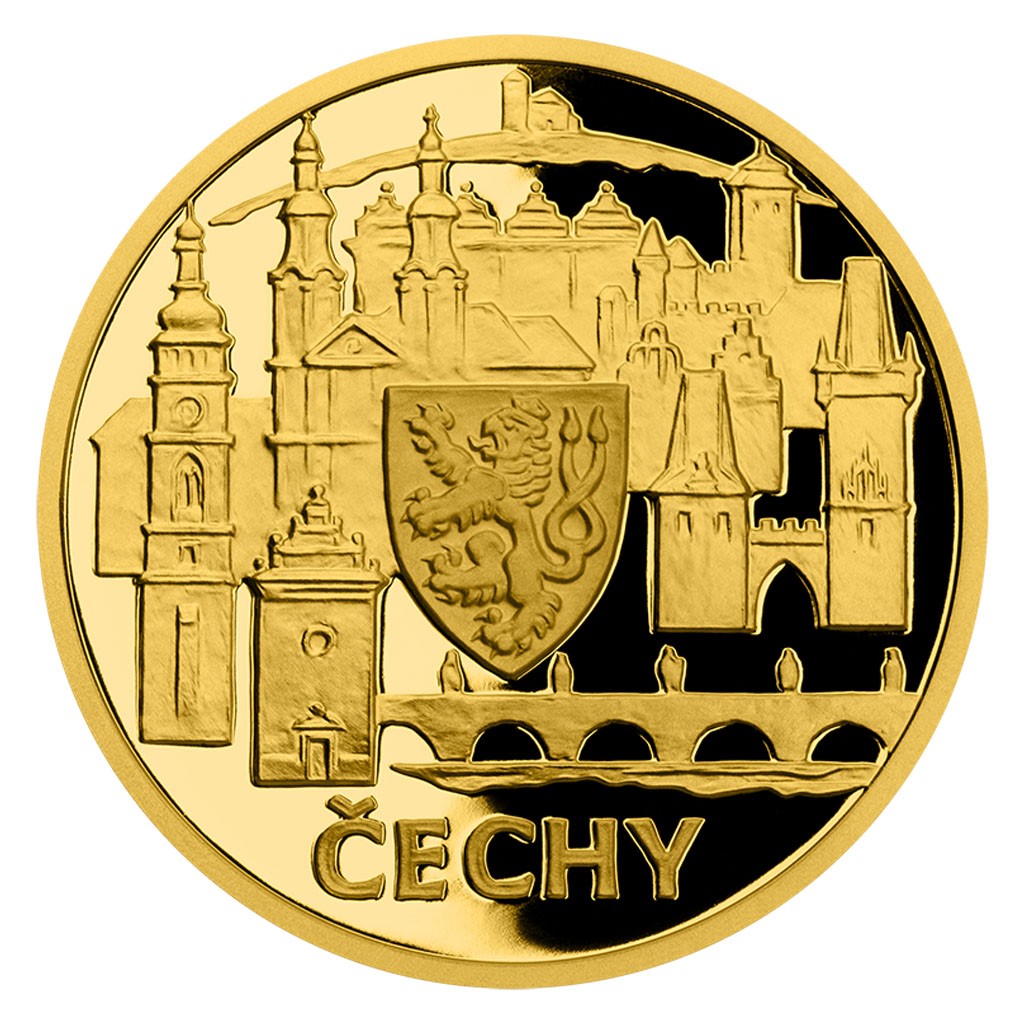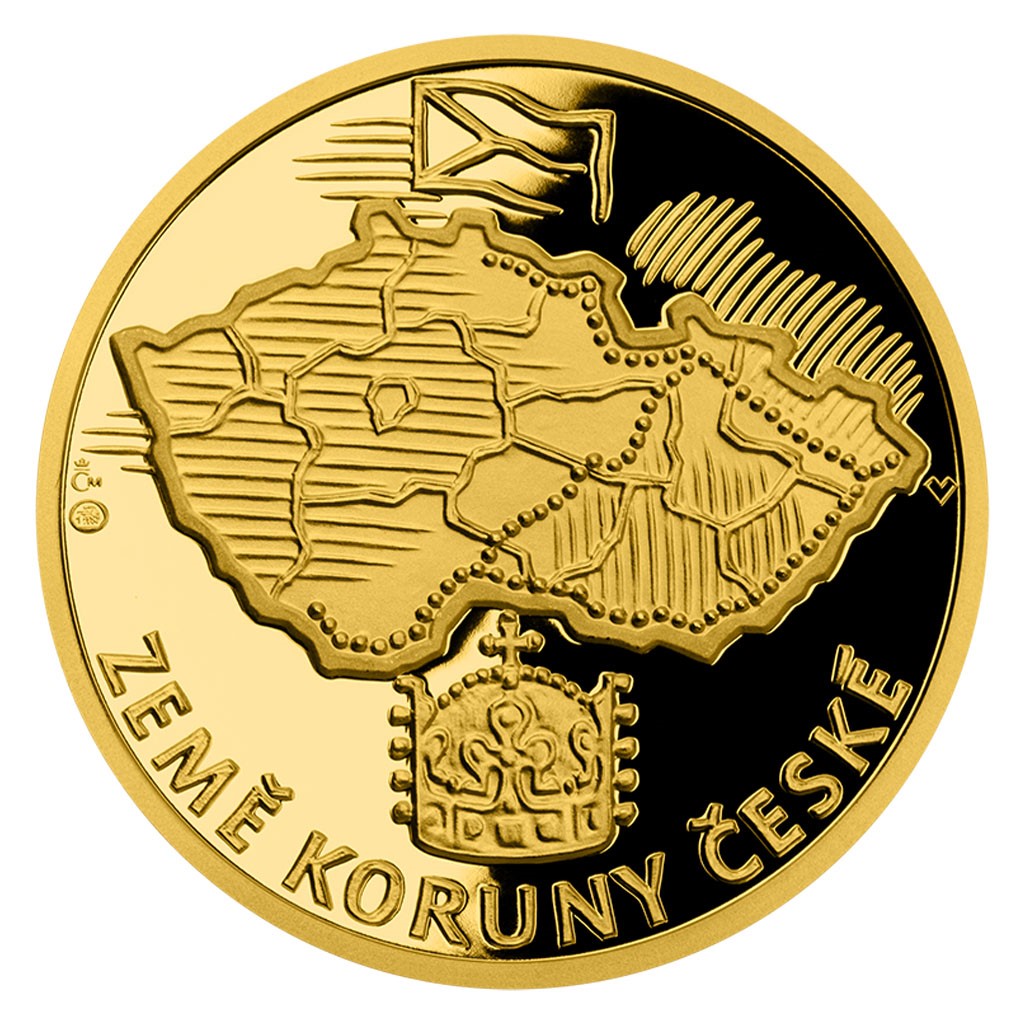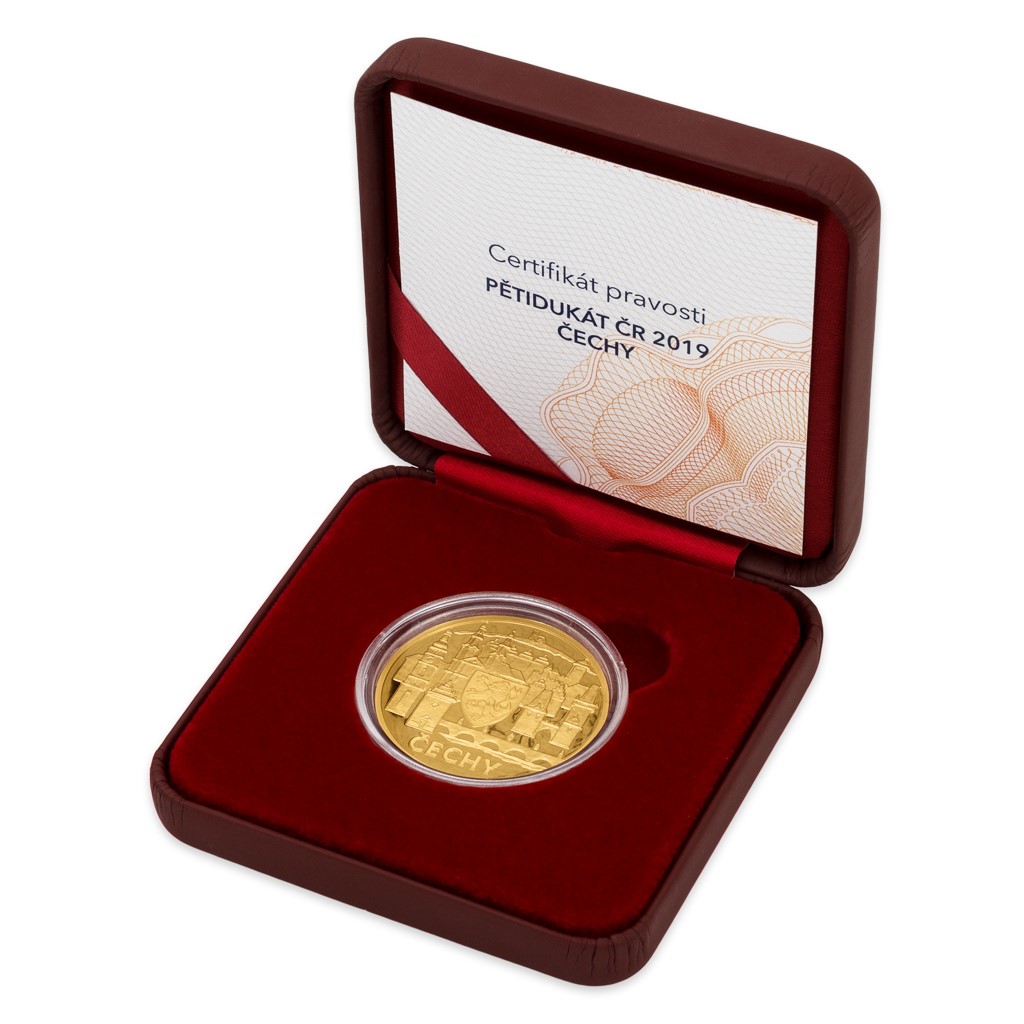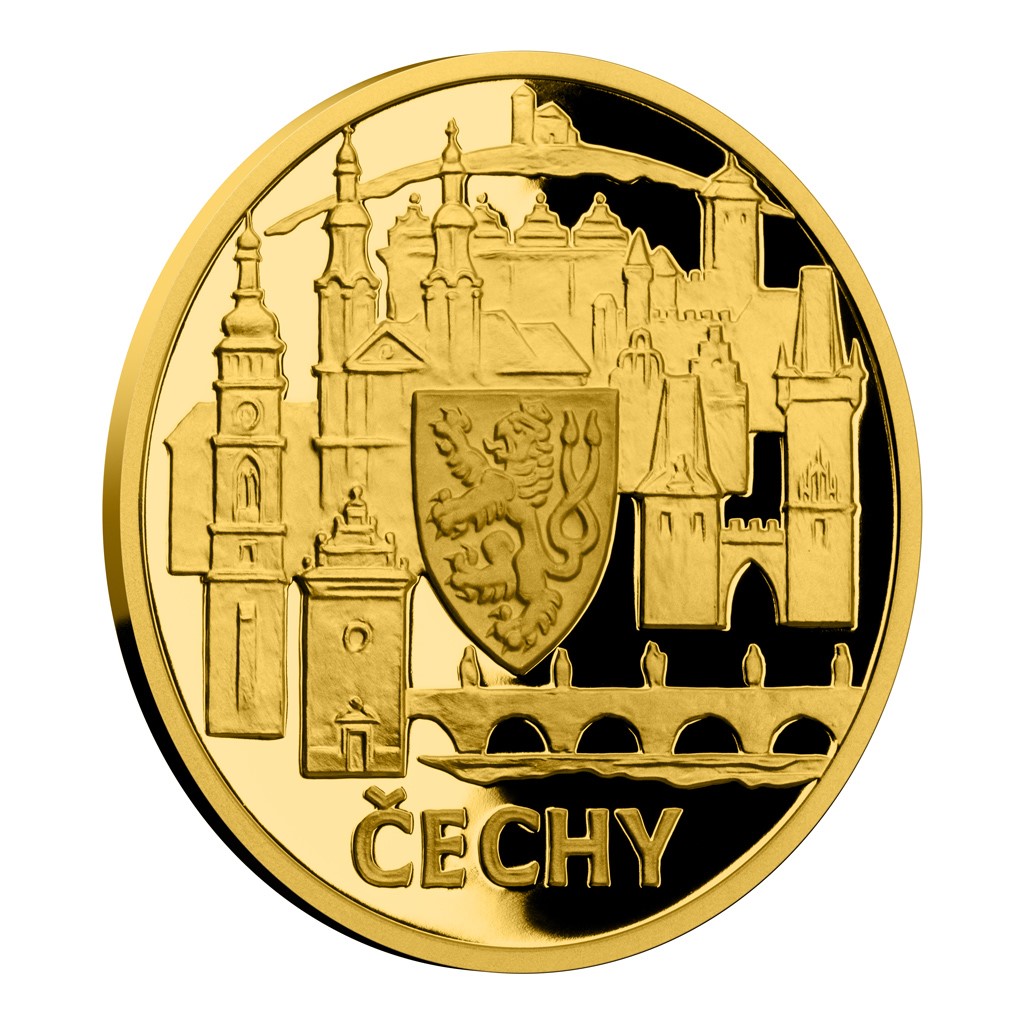5 Ducat CR 2019 Bohemia proof
Personal pickup at the store
Traditional Ducat Series
The traditional gold ducats of the Czech Republic were dedicated to the historical lands of the Bohemian Crown in 2019. Bohemia - in proportion to its size - appears on the five-ducat of the Czech Mint.
Although Bohemians are Slavs by origin, the Elbe basin was given the Latin name "Bohemia" according to the Celtic tribe of Boi. The Celts were replaced by the Germanic Markomans, and in the 7th century finally came the Bohemians, who settled at the Říp Mountain under the leadership of mythic forefather Cech (the root of the word Čech probably corresponds to the expression for human). They subordinated the older Slavic groups and formed a group to defend themselves from attacks by the Kingdom of the East Franks. In the following centuries their fates were bound to the fates of the Moravians and Silesians. Together, these nations created powerful lands of the Bohemian Crown, which often influenced the fate of the whole Europe. Bohemia with an area of 52,065 square kilometers and about six million inhabitants is the largest of today's three Czech lands.
Silver double-tailed lion in a jump with a golden crown and golden armor on a red field - such is the historical Bohemian emblem that refers to czech courage and which is placed in the heart of the reverse side of the gold five-ducat. "The relief surrounding the shield with the Czech lion is made up of architectural monuments representing the cultural and historical wealth of the country. They remind not only the capital city, but also some regions with a range of styles including Romanesque, Gothic, Renaissance and Baroque. The iconic Mount Říp with a Romanesque rotunda represents the culminating element of the composition that is closed by the inscription BOHEMIA," academic sculptor Michal Vitanovsky explains.
The reverse side is common to all the four ducats of the Czech Republic issued in 2019. The linear division of the simplified map of the Czech Republic captures the current network of regions and the division by the astragal indicates the land borders. Hatches that cross the borders resemble the previous extent of land territory. The top of the map is accompanied by current state flag, and in the lower part there is the historic St. Wenceslas Crown. The common use of these motifs emphasizes the continuity of our statehood.
Schedule of issuance for gold mintage weighing two ducats counts only 100 pieces. Its specifications are based on the iconic First Republic St. Wenceslas ducats.
 čeština
čeština
 slovenčina
slovenčina
 english
english
